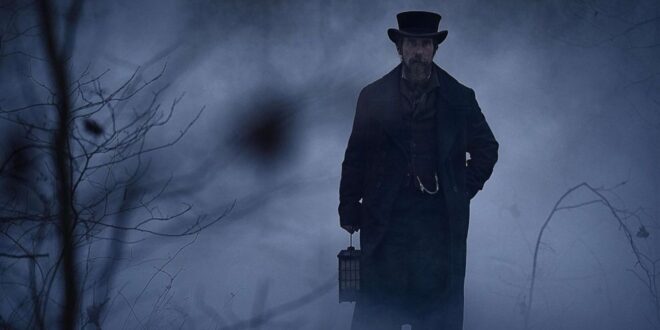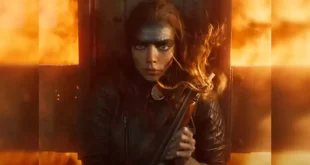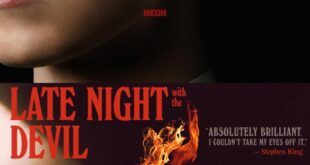Scott Cooper is a remarkably atmospheric director. If you’ve seen Out of the Furnace (2013) and Hostiles (2017), those are two particularly methodically paced films. His latest, The Pale Blue Eye, is no different. Set in 1830 at West Point, the film oozes dread with a blueish hue. You can feel the cold and the snow coming off the screen. It’s a tale of the night and fitting of an Edgar Allan Poe story. You almost want to grab a blanket and hot chocolate while watching. This kind of immersion in movies is rare these days. I wish I had the opportunity to see it on the big screen.
The plot tells the story of veteran detective Augustus Landor (played by Bal) who, in 1830 West Point, New York, investigates a series of murders at the United States Military Academy with the aid of Edgar Allan Poe (played by Harry Melling), a young military cadet. To say any more would spoil Cooper’s film’s unexpected directions. These directions will have many film watchers rolling their eyes, but I admired the chutzpah of it. There are enough quality things about The Pale Blue Eyes where it doesn’t rely on whether the ending works.
The performances by the cast are all first-rate. Christian Bale is far more reserved here than in Amsterdam and relies on his notable screen presence effectively. The best acting in the film, though, is Harry Melling as Edgar Allan Poe, who matches Christian Bale’s tit-for-tat. Melling has a far more showy performance and is hypnotically watchable as Poe. The film’s best moments are when Melling and Bale work together to solve the murder. They have some standout scenes together that are compelling. Movie fans might recognize Melling from the Harry Potter films, but he’s become prominent recently thanks to the enormous popularity of Netflix’s The Queen’s Gambit.
You’ll notice that most of an American story’s cast is populated by those goshdarn Brits who apparently do American accents better than us! One non-Brit is the legendary Robert Duvall, who is always wonderful to watch. The rest of the cast is full of fine supporting work from Gillian Anderson (underused and underrated), Lucy Boynton, Charlotte Gainsbourg, and Timothy Spall.
The Pale Blue Eye is not perfect. A couple of subplots don’t work and aren’t necessary. Many might find the methodical pacing to be slow-moving and not entertaining. However, for those who love moody and brooding murder mysteries that take their time building up dread, you can certainly do worse.
 Movie Finatics The Place for Movie Lovers
Movie Finatics The Place for Movie Lovers




